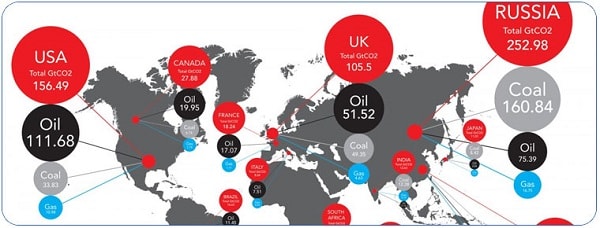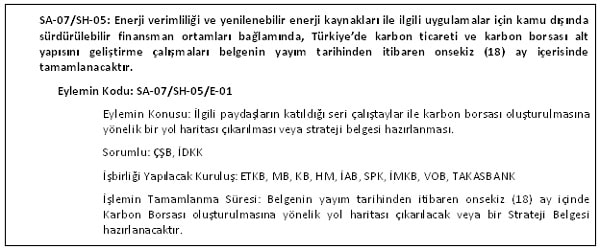A very large portion of the carbon market, which represents all of the terms that generate carbon dioxide, despite the use of the carbon market in the literature that other greenhouse gases also translated as carbon equivalent usually greenhouse gases, to work in the market rules in line with reducing emissions with the condition is seen as an important tool. More than that specified emission limits for carbon markets to reduce emissions of punishing those who are less rewarding release provides the most cost-effective channeling of available resources. Also thanks to pollute pricing units to make it possible to trade in the world’s carbon by converting proprietary carbon market properly functioning businesses less greenhouse encouraging gas emissions to release leads to the use of clean technologies.

mandatory carbon markets (flexibility mechanisms of the Kyoto Protocol), and can be divided into two categories, namely volunteers:
Mandatory Carbon Markets (KYOTO Protocol Flexibility Mechanisms)
Countries with Kyoto flexibility mechanisms defined in the Protocol are recognized allowed them to make low-cost emission reductions. Protocol flexibility mechanisms defined Emissions Trading (Emission Trading -ET), Joint Implementation (Joint Implementation-J) is the Clean Development Mechanism (Clean Development Mechanism-CDM).
According to the Kyoto Protocol Emissions Trading (ET) and Joint Implementation (JI) mechanism between Annex I countries and the Clean Development Mechanism Annex I and non-Annex I made between countries.
1. Joint Implementation (JI): Protocol 6 held with the substance of this mechanism, provided the requirements of Annex I countries, human-induced greenhouse gas emissions reduced or derived from projects aimed at the removal through sinks of greenhouse gases Emission Reduction Credits ” (Emission Reduction Unit-ERU) earned the win and credits are deducted from the total target.
2. Clean Development Mechanism (CDM): this mechanism regulated by Article 12 of the Protocol by non-Annex I greenhouse gas emissions in line with the principles of sustainable development are intended to contribute to the reduction of the country.Annex I to the involved parties of release additional to achieve the reduction commitments-in external countries as a result of project activities to be made in the ‘Certified Emission Reduction Credits “(Certified Emission Reductions-CER) will gain.
3. Emissions Trading (ET): The Kyoto Protocol? S Article 17 Any party included in Annex I list this mechanism is regulated by the countries in Annex B? Also make trade a portion of the amount of reduction determined that release. In other words, the promised amount of emission reductions that more country-side, this additional reduction in emissions can sell to other Annex I countries.
Voluntary Carbon Markets
Voluntary Carbon Markets individuals, institutions and organizations, companies, NGOs activities resulting from the voluntary reduction of greenhouse gas emissions are created in order to facilitate the balancing market.
This process is a process similar to the Flexible Mechanisms implemented as required under the Kyoto Protocol. Public to be included within the scope of the national obligations as long as it separates from the mandatory process of the voluntary carbon market of the Kyoto Protocol is one of the most important differences.

not legally binding, release aims to reduce mitigation costs and participants in the private sector, international organizations (Olympiads, conferences, concerts), government agencies and third parties which may voluntarily stakeholders of emissions trading,
– Project owners (who can buy their certificates by creating emission reduction projects)
– Wholesalers (sell large reduction certificates in their own portfolio)
– Retailers (certificates in small quantities to sell to individuals or organizations) and
– Brokers (although a release certificate to those who buy their own emission certificates with areas being bringing the vehicle).
Carbon Market in Turkey
Turkey, although it does not benefit from the flexibility mechanisms of the Kyoto Protocol which are subject to the emissions trading; This mechanism of functioning independently, established in accordance with the principle of voluntary environmental and social responsibility projects for the Carbon Market under development since 2005 and implemented.
Voluntary Carbon Markets, offers an opportunity for Turkey’s further period of participation in the carbon market, which is in use world carbon market in a very small percentage represents Although this market state-i ready effectively. Shortly high standard and a high volume potential of stimulating voluntary emissions trading system, the post-2012 climate regime facing Turkey’s contribution to, as well as the technical infrastructure of empowerment, investment in clean technology investors said to make it more attractive.
Greenhouse Gas Emission Reduction Registry Provides Operations Related to Project
Prepared by the Ministry of Environment and Urbanism ‘Greenhouse Gas Emission Reduction Registry Provides Operations Communiqué on the project “; Date 07.08.2010 and published in Official Gazette No. 27 665 entered into force (Amendment: 22.10.2011 date and 28 092 Official Gazette).
Developed for notification by the Voluntary Carbon Markets and is expected to be recorded of the projects. Created in the notification within the Registry within Turkey greenhouse gas emissions of one or avoid, reduce and aimed to increase carbon sinks have obtained the certificate reduction verified emissions or to achieve that is being developed in the Voluntary Carbon Market or covers projects developed. Registration only covers emission reduction activities is aiming to achieve certification in the carbon market, apart from the remaining emission reduction work in the forward-looking regulation to keep records of the period are planned to be implemented.
projects under the Registry; Ministry of Environment and Urban Planning Ministry and will be transmitted officially to also reach the www.iklim.csb.gov.t addresses are recorded to the electronic records system of the Ministry. Registration System (Registry) is seen as the first step taken by Turkey towards the future of the carbon market. the Registry; project as a result of the recording of reduced greenhouse gas emissions and monitoring, preparation for and possible mandatory market after 2012 for all parties (learning by doing, learning by doing), the increasing awareness of the carbon market mechanism, while increasing the reliability of the carbon certificate produced in Turkey about the project exchange of information etc. the promotion of good practices with the increase. It is aimed.
Energy Efficiency Strategy Paper (2012-2023)
Energy and Natural Resources, prepared by the Ministry and approved by the HPC Energy Efficiency Strategy Paper (2012-2023), 25 February 2012 and published in Official Gazette No. 28215 was enacted. The main objective of the document ‘Turkey in 2023 compared to 2011. The value of the amount of energy consumed per unit of GDP at least 20% reduction “is. In the Strategy Paper carbon markets of and action on the establishment located on the stock market it is presented below.

Source: Directorate General of Renewable Energy

